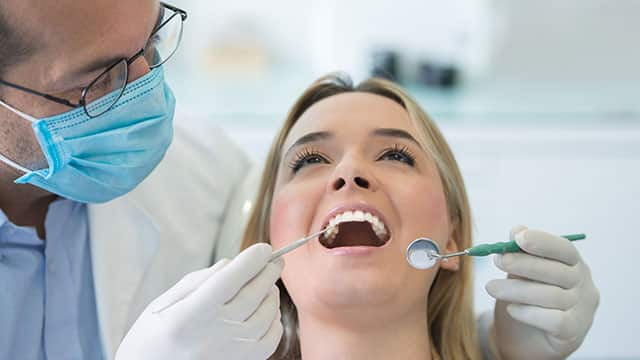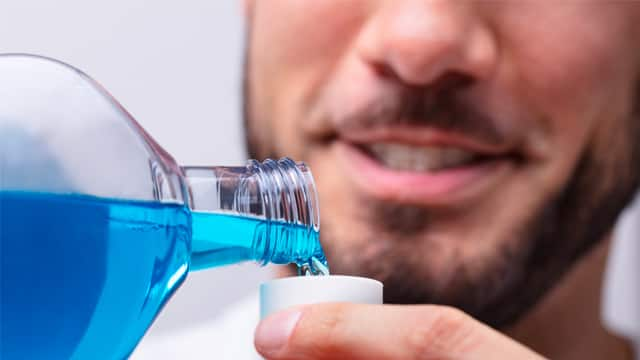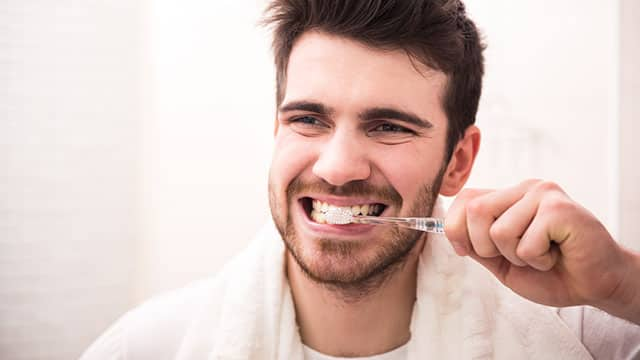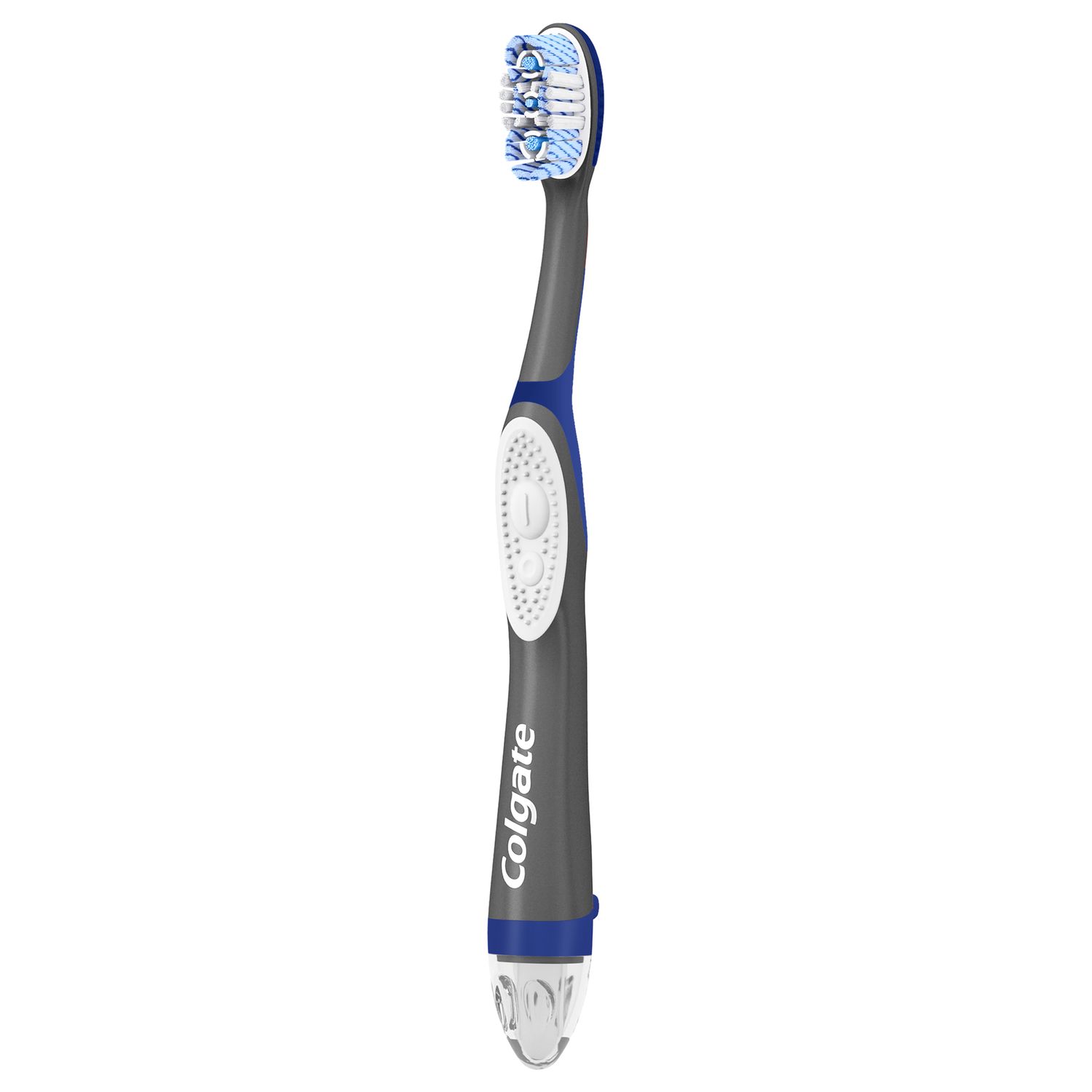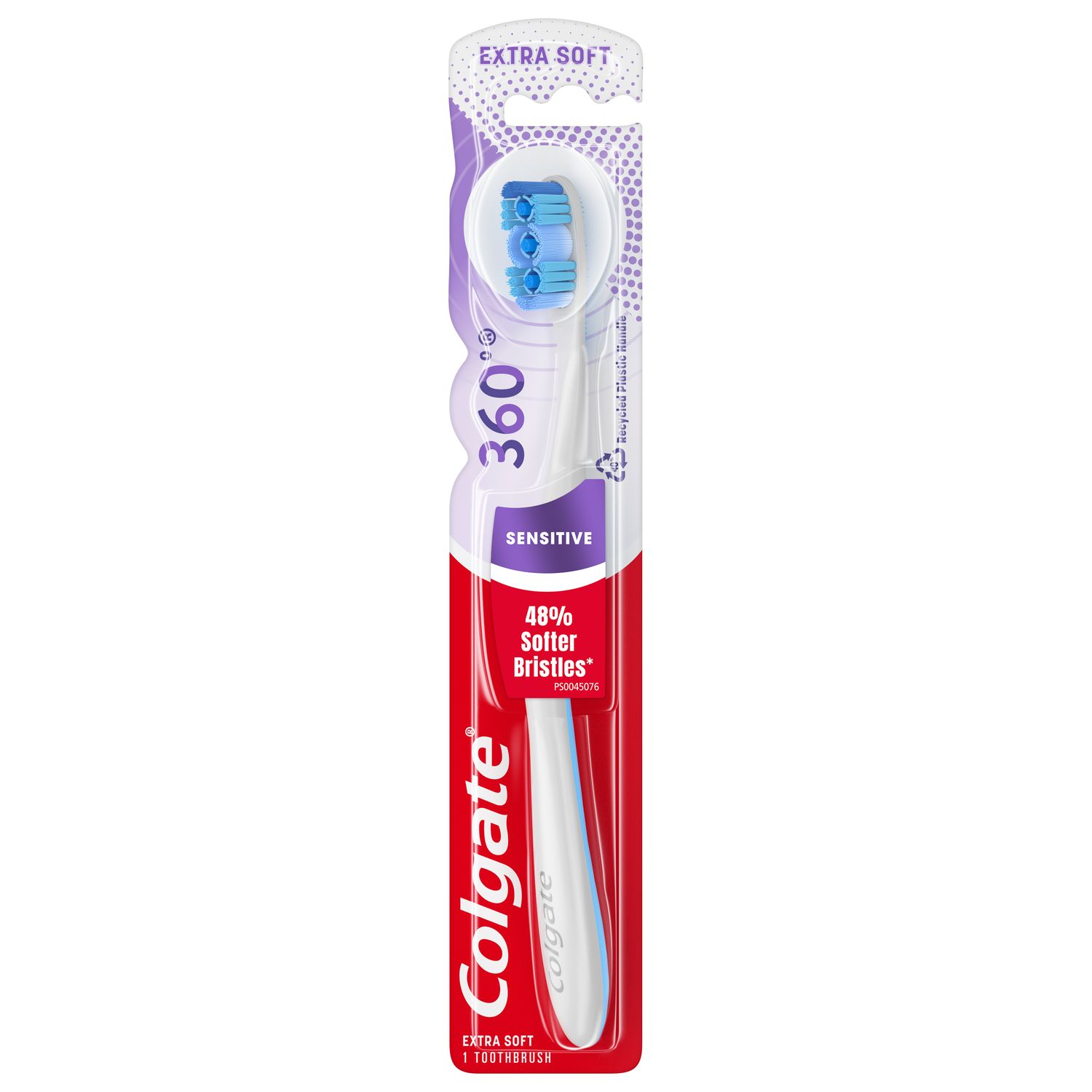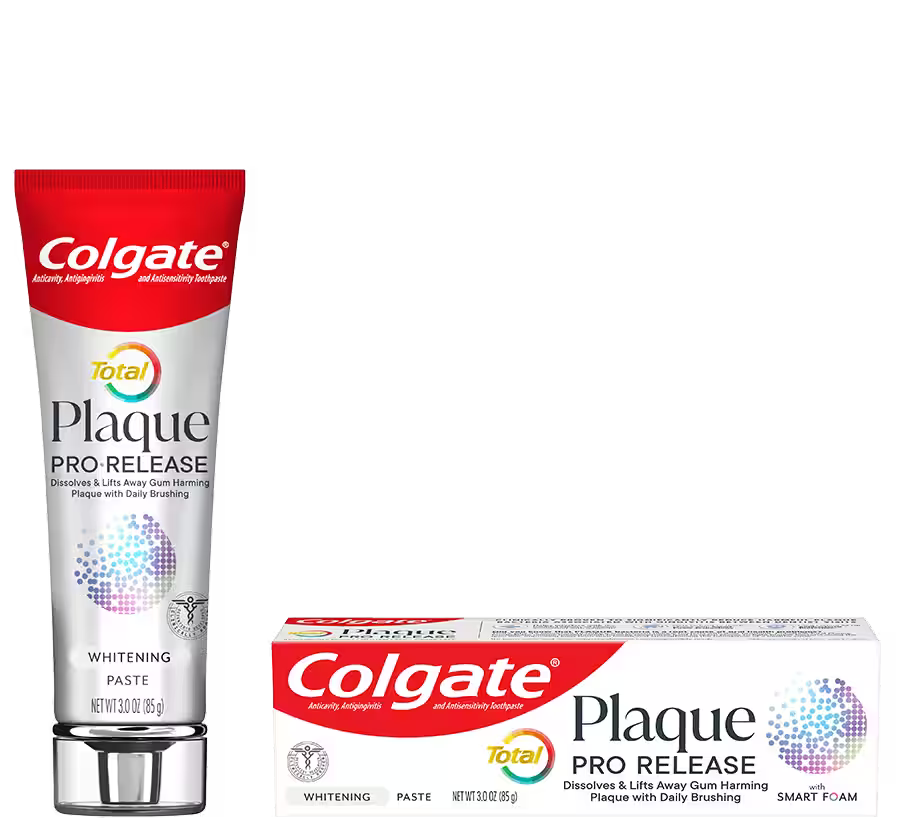
Pro-Release Whitening Toothpaste
Dissolve and lift away gum harming plaque with daily brushing using Colgate Total® Plaque Pro-Release Whitening Toothpaste.

What is Plaque?
Plaque — also called biofilm — is a colorless layer of bacteria buildup on your teeth. When we eat foods full of carbohydrates, the bacteria in our mouth feed on those carbohydrates and produce acids. According to the American Dental Association (ADA), those acids can weaken enamel and increase the risk of developing cavities. Further, plaque will eventually harden into tartar and make your gums swollen and bleed easily, an early sign of gum disease. The good news is that plaque removal is simple with good oral hygiene and your dental hygienist's help.
How to Remove Plaque at Home
Getting rid of that sticky biofilm is easy. Thoroughly cleaning all surfaces of your teeth, between your teeth and under the gumline, can help remove the food debris that feeds bacteria. When plaque has hardened into tartar, also known as calculus, you must visit your dental hygienist to remove it, as normal brush and flossing will not.
Brushing Your Teeth
You should brush your teeth at least twice a day or after every meal. Brush for at least two minutes to prevent bacteria buildup and decay. It doesn't take a lot of pressure or vigorous brushing to remove plaque. Using a soft-bristled toothbrush and fluoride toothpaste to brush each tooth will help remove buildup and food debris.
Remember that bacteria love carbohydrates found in sweets, soda, or snacks. So, reducing the amount of this food and drinks, along with brushing and cleaning between your teeth, is crucial to keeping plaque under control.
Floss, Flossers and Other Interdental Cleaners
Cleaning between your teeth and under the gumline is crucial for biofilm and plaque removal and can help prevent gingivitis and tooth decay. There are several kinds of products that will clean in those hard-to-reach places.
- Traditional dental floss can curve around your teeth to clean every side of each tooth.
- Water flossers use a water jet to clean between the teeth.
- Dental picks can reach between the teeth if you have braces or another barrier to flossing with dental floss.
Ask your dental hygienist for recommendations on flossing products, or you can look for the ADA Seal of Acceptance for their approved products.
How Can I Prevent Plaque Buildup?
According to the Cleveland Clinic, it's easy to prevent plaque buildup with proper care. Now that you've learned about how bacteria builds up on your teeth, remember to do the following:
- Brush all surfaces of your teeth thoroughly at least twice a day
- Clean between your teeth and under your gumline with floss, water flossers, or another tool daily
- Limit sugary or starchy foods and drinks, especially snacks
- Schedule regular visits with your dental hygienist and dentist
If plaque builds up for too long, it can harden into tartar, which cannot be removed at home. Fortunately, your dentist and dental hygienist can treat plaque or tartar buildup issues and give you special instructions for your exact situation. Happy brushing. You've got this!
This article is intended to promote understanding of and knowledge about general oral health topics. It is not intended to be a substitute for professional advice, diagnosis or treatment. Always seek the advice of your dentist or other qualified healthcare provider with any questions you may have regarding a medical condition or treatment.
ORAL HEALTH QUIZ
What's behind your smile?
Take our Oral Health assessment to get the most from your oral care routine
ORAL HEALTH QUIZ
What's behind your smile?
Take our Oral Health assessment to get the most from your oral care routine





